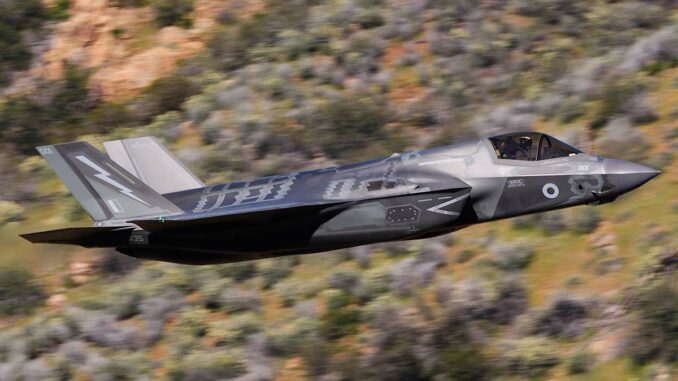
The future of fighter aircraft is a complex and fascinating subject, integrating technological advances, defense strategies, and political and economic considerations. Here’s our complete dossier on the future of fighter aircrafts, covering key technological and strategic aspects.
Advanced technological integration
Advanced technological integration in future fighter aircraft refers to the incorporation of new innovations and improvements in various aspects of aircraft design and functionality.
Improved propulsion systems
Higher speed: Future fighters will be equipped with more advanced engines, capable of delivering higher speeds. This could include technologies such as variable-cycle jet engines or scramjet engines, which enable hypersonic speeds.
Maneuverability: Maneuverability is crucial in aerial combat. Future aircraft could incorporate advanced thrust vector systems that enable aircraft to change direction quickly and efficiently.
Stealth technologies
Radar Signature Reduction: Stealth involves making the aircraft less detectable by enemy radars. This is often achieved through the design of the aircraft’s structure (angular or curved shapes to deflect radar waves) and the use of radar-absorbing materials.
Masking techniques: In addition to physical design, advanced techniques such as Active Signature Management can be used. These techniques dynamically modify the way the aircraft is perceived by enemy radars.
Reducing Other Signatures: Stealth is not just about radar detection. Future fighter aircraft could also seek to reduce other signatures, such as infrared (heat) and acoustic (noise) signatures, to be even less detectable.
These technological advances are aimed at increasing the survivability, efficiency and performance of fighter aircraft in increasingly complex and contested environments. Stealth, for example, is crucial in modern scenarios where early detection can mean vulnerability. At the same time, better propulsion means faster response and greater agility in combat situations.
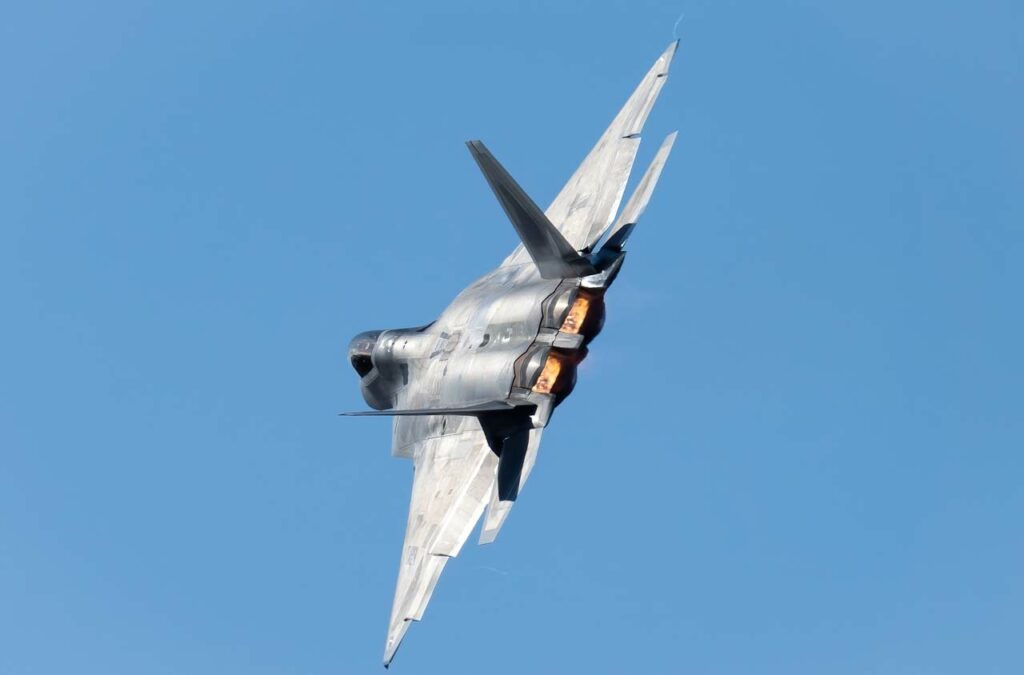
Artificial intelligence and autonomy
The integration of artificial intelligence (AI) and increased autonomy represent two major advances in the development of future fighter aircraft.
Artificial Intelligence in Fighter Aircraft
Real-time data analysis: AI can rapidly process large quantities of data from a variety of sensors and information sources. In a combat scenario, this means that AI can help interpret radar, reconnaissance and intelligence data to provide a clear, up-to-date picture of the battlefield.
Improved Decision Making: With AI assistance, pilots can make better and faster decisions. AI can suggest optimal strategies, identify potential threats, and recommend tactical maneuvers.
Pilot Assistance: AI can also help in piloting the aircraft by automating certain tasks, enabling the pilot to concentrate on the strategic aspects of the mission.
Fighter Aircraft Autonomy
Performing tasks without human intervention: Increased autonomy means that fighter jets will be able to perform certain operations without direct pilot intervention. This could include navigating to a target area, holding formation, or even engaging enemy targets under certain conditions.
Reducing risks for pilots: By automating dangerous or complex tasks, autonomy reduces the risks to which pilots are exposed. This is particularly relevant in hostile environments, where decisions have to be taken quickly under intense stress.
Pilotless fighter planes: In the future, we could see fully autonomous fighter planes, capable of carrying out missions without a human pilot on board. These aircraft would use AI to navigate, identify targets and make tactical decisions.
Strategic and operational implications
The integration of artificial intelligence (AI) and autonomy into fighter aircraft has far-reaching implications, at both strategic and operational levels.
Strategic and operational benefits
Faster responsiveness: With AI, fighter jets can analyze combat situations and react faster than humans. This is crucial in environments where windows of opportunity are short and reaction speed can be decisive.
More precise decision-making: AI can process a multitude of data simultaneously, enabling more in-depth and precise analysis. This helps identify the most relevant targets and choose the best tactics in complex situations.
Reduced Human Error: AI and autonomy can reduce errors due to fatigue, stress or human cognitive limitations, improving mission effectiveness.
Ethical and legal issues
Targeting Decision-Making: The use of AI to identify and engage targets raises significant ethical questions. Who is responsible if an AI targets incorrectly or causes collateral damage?
Rules of Engagement: Rules of engagement define when and how military forces can engage the enemy. The integration of AI requires a re-evaluation of these rules to ensure they remain relevant and ethical in a context where decisions can be made by machines.
Legal liability: In the event of an incident, the question of legal liability becomes complex. Should we hold liable the AI designers, the operators, or the military entity using these systems?
Security and defense implications
Changing military doctrines: The integration of AI and autonomy into fighter aircraft could lead to changes in military doctrines, with an emphasis on electronic warfare, cyber warfare and hybrid operations.
Technological dependence: Increased dependence on advanced technologies raises concerns about vulnerabilities, particularly in the face of cyber-attacks or electronic countermeasures.
Control and Reliability issues
Human control: It is crucial to maintain an appropriate level of human control over autonomous weapons systems to ensure ethical and responsible decision-making.
System Reliability: The reliability of AI systems in unpredictable and changing combat environments is a major concern. It is essential that these systems are robust and resistant to failure or manipulation.
AI and autonomy in fighter aircraft open up considerable possibilities for improving military capabilities. However, they also introduce significant challenges in terms of responsibility, ethics and safety. Managing these challenges will require careful thought, appropriate regulations, and international collaboration to ensure that the use of these technologies is both effective and compliant with international ethical and legal standards.
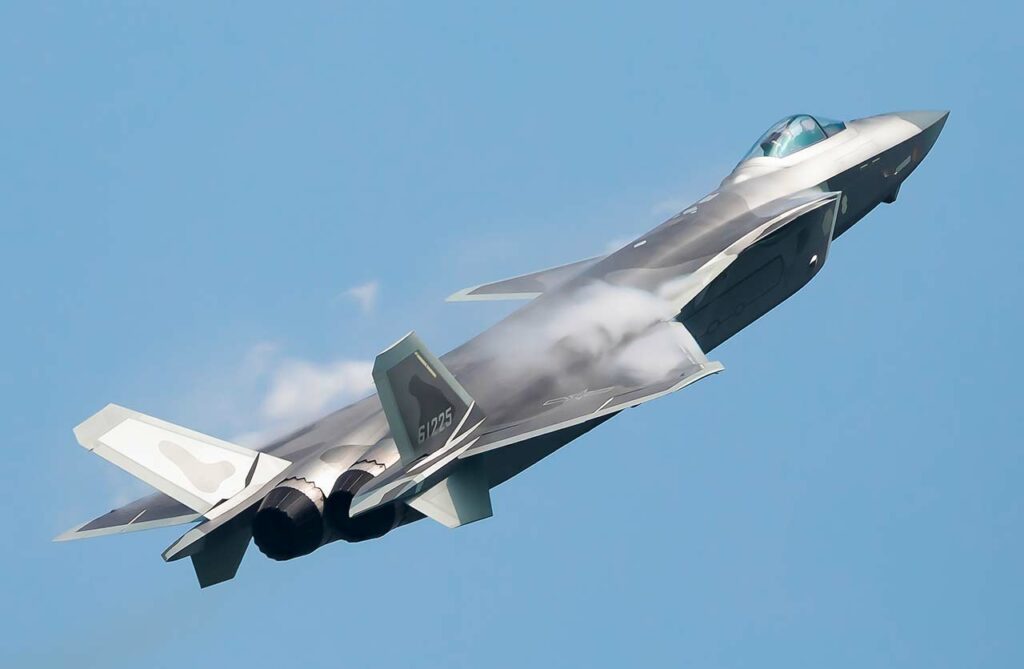
Cyber security and electronic warfare
Cyber-security and electronic warfare are increasingly important elements in the design and operation of modern fighter aircraft.
Cyber Security in Fighter Aircraft
Connectivity and vulnerability: As technology advances, fighter aircraft are equipped with complex electronic systems and are often connected to networks. This connectivity increases the risk of cyber-attacks, which could compromise the aircraft’s systems, communications or data.
Protection against cyber-attacks: Cyber-security involves putting in place measures to protect aircraft against such attacks. This includes secure software and protocols, encryption of communications, and intrusion detection and response systems.
On-board systems security : On-board systems in fighter aircraft, such as navigation, flight control and weapons systems, must be particularly secure, as their compromise could have disastrous consequences.
Electronic warfare
Enemy signal jamming: Electronic warfare involves the use of techniques to disrupt or destroy enemy communications and radars. This can be achieved by jamming electronic signals, making it difficult for the enemy to communicate or detect aircraft.
Electronic attacks: Beyond simple jamming, fighter aircraft could be equipped to carry out more sophisticated electronic attacks. This could include injecting malicious code into enemy systems or exploiting vulnerabilities in their networks.
Defense against electronic warfare: In parallel, aircraft need to be equipped to defend against such enemy tactics. This includes electronic countermeasure systems to protect against jamming or attack.
Strategic importance
Tactical advantage: An aircraft capable of dominating the electronic sphere can effectively blind its enemy or disrupt its operations, offering a significant tactical advantage.
Electronic arms race: Cyber-security and electronic warfare represent a new area of the arms race, where nations are investing to develop more advanced technologies to attack and defend themselves.
Cyber security and electronic warfare are essential in the modern warfare environment, offering both offensive and defensive tools crucial to air superiority. Advances in these areas will continue to shape the way air conflicts are fought, requiring constant vigilance and innovation to stay ahead of potential adversaries.
Sustainability and ecology
The inclusion of sustainability and ecology in the design of future fighter aircraft reflects a growing awareness of the environmental impact of military activities.
Use of lighter, stronger materials
Lighter aircraft: The use of advanced composite materials, such as carbon fibers or light alloys, helps to reduce aircraft weight. This translates into lower fuel consumption and, consequently, lower emissions.
Durability of Materials: Modern materials are not only lighter, but also stronger and more durable, extending aircraft life and reducing the need for frequent maintenance and replacement.
Development of Alternative Energy Sources
Biofuels: Biofuels, which are produced from renewable sources such as plants or algae, can reduce the carbon footprint of fighter jets. They offer an alternative to traditional fossil fuels, although their use in high-performance aircraft is still at an experimental stage.
Electric power: Another potential avenue is the exploration of electric propulsion for fighter aircraft. Although currently limited by challenges such as energy storage and power, battery technology continues to progress rapidly.
Impact on Design and Operation
Integrated design: Integrating sustainability into fighter aircraft design means going beyond simply replacing materials or energy sources. It means rethinking aerodynamic design, propulsion systems and overall energy efficiency.
Ecologically responsible operations: Armed forces could also seek to make their operations more environmentally friendly, for example by optimizing flight routes to minimize fuel consumption, or by adopting more sustainable maintenance practices.
Practical considerations and challenges
Balancing performance and ecology: One of the greatest challenges is to balance the high performance requirements of fighter aircraft with ecological objectives. Technological advances must meet the rigorous standards of reliability and efficiency required in combat situations.
Cost and feasibility: The transition to greener materials and alternative energy sources can be costly. Moreover, it is essential to ensure that these innovations are practical and feasible in the context of military operations.
Sustainability and ecology are becoming important considerations in the development of future fighter aircraft. This trend reflects a wider recognition of environmental responsibilities in all sectors, including defense. While implementing these principles presents challenges, the potential benefits in terms of reduced environmental impact and long-term operational efficiency are considerable.
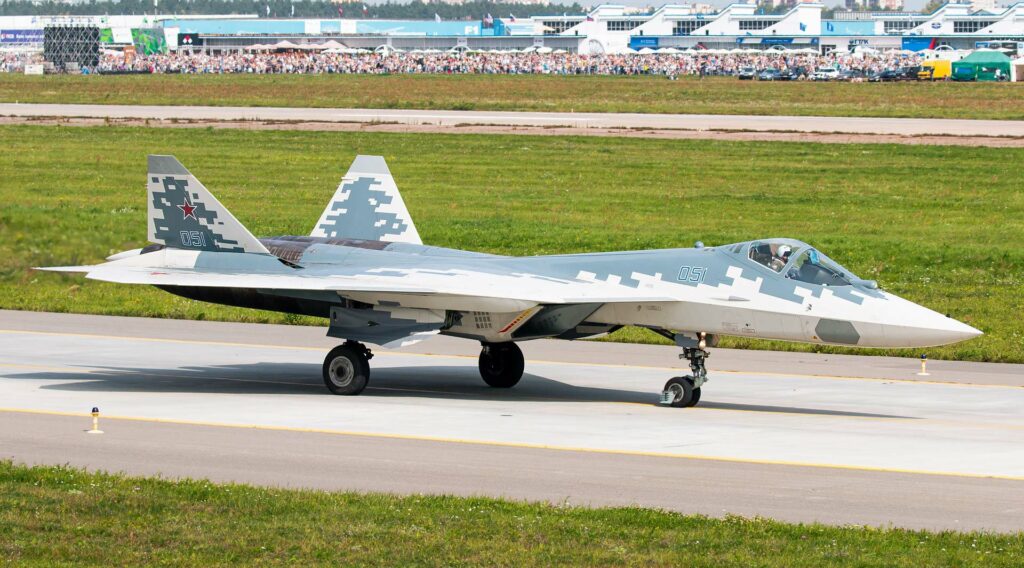
Role multiplicity and versatility
Multi-role capability and versatility in future fighter aircraft are increasingly high priorities due to changing conflict scenarios and operational requirements.
Versatile design
Multiple roles: Instead of specializing in a single type of mission (such as air superiority or ground strikes), tomorrow’s fighters will be designed to be versatile. This means they will be able to carry out a wide range of missions, including air combat, ground attack, reconnaissance, and possibly even air-to-air refueling or command and control functions.
Adaptability: Versatility means that these aircraft will be able to adapt quickly to different conflict scenarios, changing roles according to mission requirements. This can be facilitated by modular weapon systems, integrated surveillance and reconnaissance capabilities, and advanced communications systems.
Tactical and strategic benefits
Operational flexibility: An aircraft capable of fulfilling several roles can be deployed more flexibly, which is an important tactical advantage. This enables armed forces to respond rapidly to a variety of situations without the need for several specialized aircraft types.
Logistical efficiency: Versatility reduces the need to maintain a large fleet of specialized aircraft. This translates into savings in terms of maintenance, personnel training and logistics.
Rapid Response Capability: In situations of crisis or sudden conflict, the ability to switch rapidly between different operational roles enables a more immediate and appropriate response.
Design challenges
Balance between Specialization and Versatility: A major challenge in the design of multi-purpose aircraft is to strike the right balance between specialization for optimum performance in a specific role, and the flexibility needed to perform a variety of tasks.
Technical complexity: Designing aircraft capable of fulfilling multiple roles increases technical complexity. This can include advanced avionics systems, modular aircraft structures, and sophisticated software to manage different configurations and operational modes.
Impact on Military Planning and Strategy
Mission planning: The versatility of fighter aircraft influences the way missions are planned and executed, enabling greater flexibility and creativity in strategies.
Pilot training: Pilots of these versatile aircraft will need to be trained to master a wider range of skills and operational scenarios.
The multiplicity of roles and versatility of future fighter aircraft are essential to meet the changing challenges of modern conflict. Although this approach presents design and training challenges, it offers significant operational flexibility, logistical efficiency and tactical advantage in a variety of combat situations.
Interoperability and international cooperation
Air force interoperability and international cooperation are crucial to modern military operations.
Interoperability between Air Forces
Communication and Common Systems: Interoperability means that fighter aircraft from different countries can communicate effectively with each other. This often requires compatible communication systems and standard protocols.
Joint Exercises and Training: To develop and maintain interoperability, air forces take part in joint exercises. These exercises test and improve the compatibility of systems and tactics.
International cooperation
Joint and Multinational Missions: In today’s geopolitical context, military operations often involve a coalition of forces from different countries. Interoperability is essential to the success of these missions, whether they be combat campaigns, peacekeeping missions, or humanitarian operations.
Equipment standardization : To facilitate interoperability, there are efforts to standardize certain equipment and technologies across different air forces. This can include weapons systems, avionics and even aircraft platforms.
Technological and logistical implications
Compatible technology: Fighter aircraft must be equipped with technologies that enable them to be integrated into combined combat systems. This includes compatible navigation, surveillance and targeting systems.
Logistics and maintenance: Interoperability also affects logistics and maintenance. The ability to share spare parts, equipment and maintenance facilities between allied countries can significantly improve operational efficiency.
Challenges and considerations
Security and confidentiality: A major challenge of interoperability is to maintain the security and confidentiality of sensitive information. It is essential to protect data and communications from interception or leakage.
Diversity of capabilities: Air forces from different countries may have very different levels of technology and capabilities. Finding common ground for interoperability while maximizing each other’s capabilities is an ongoing challenge.
Strategic importance
Strengthening alliances: Interoperability strengthens strategic alliances and partnerships. It enables a coordinated and effective response in crisis situations, and increases the diplomatic and military weight of coalitions.
Adaptability to Global Threats: In a world where threats are increasingly transnational, interoperability enables allied forces to respond more flexibly and adaptively.
Interoperability and international cooperation are key elements of modern air forces, enabling effective joint operations and a unified response to global security challenges. This requires technological harmonization, regular joint exercises, and joint strategic planning, while managing information security issues and capability diversity.
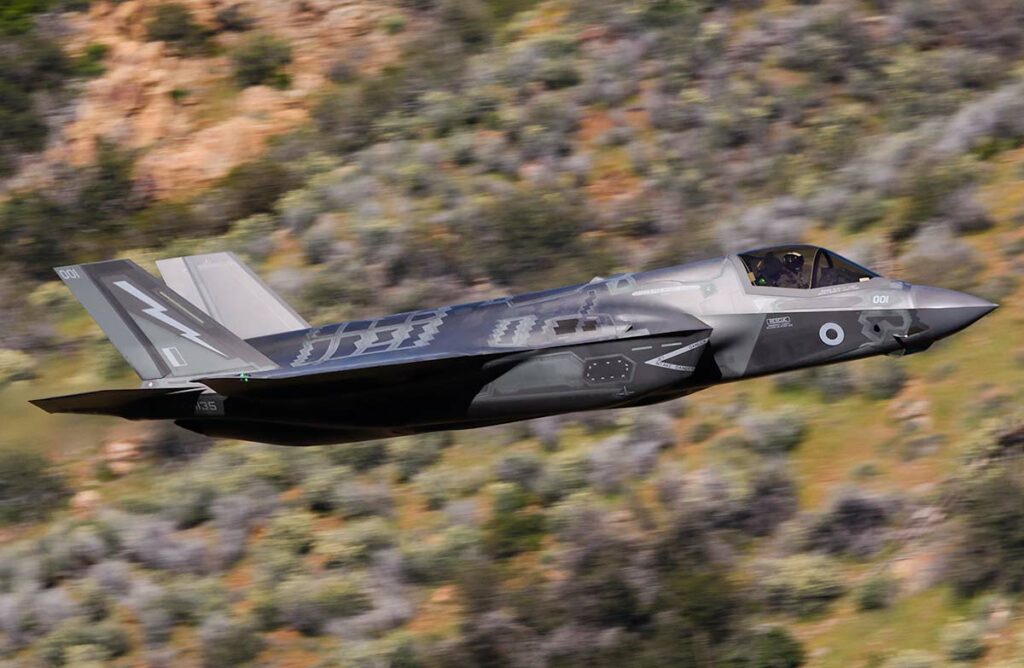
Economic and political impact
The economic and political impact of the development and maintenance of new-generation fighter aircraft is a complex, multi-faceted issue:
Economic impact
High development costs: The development of modern fighter aircraft involves massive investment in research and development. Cutting-edge technology, advanced weapons systems and innovative materials require substantial funding.
Expensive maintenance and operations: In addition to the cost of development, modern fighter aircraft are expensive to maintain and operate. This includes the costs of regular maintenance, personnel training, fuel and technological upgrades.
Implications for national budgets: High acquisition and maintenance costs can have a significant impact on national defense budgets. This can lead to trade-offs between military spending and other budget items such as education, health or infrastructure.
Political impact
Arms race: The quest for the most advanced fighter aircraft can lead to an arms race, particularly in regions with geopolitical tensions. This can increase regional rivalries and influence the balance of power.
Demonstration of power: Owning state-of-the-art fighter aircraft is often perceived as a symbol of national power and prestige. This can have diplomatic implications, particularly in international negotiations or alliances.
Dependence and influence: Countries that cannot afford to develop their own advanced aircraft technology may become dependent on exports from other nations, which can influence international relations and foreign policy.
Strategic considerations
Balance between Technology and Numbers: Countries need to strike a balance between investing in a small number of highly advanced aircraft and maintaining a larger but less technologically advanced air force.
Technological innovation vs. cost: There is an ongoing tension between the desire to incorporate the latest technology and the need to control costs. This can affect decisions on upgrades and acquisitions.
Global impact
Race for Technological Superiority: Competition for the development of advanced aeronautical technologies has a global impact, influencing international security dynamics and power balances.
Ethical and security issues: The ethical and security implications of the proliferation of advanced military technologies, particularly drones and autonomous weapons systems, are also of global concern.
The evolution of next-generation fighter aircraft has profound economic and political implications, influencing not only defense budgets, but also domestic politics and international relations. Managing these impacts requires a delicate balance between security needs, budgetary constraints, and ethical and strategic considerations.
The future of fighter aircraft lies at the crossroads of technological innovation, strategic challenges, and economic and environmental imperatives. The air warfare landscape of the future is likely to be dominated by faster, smarter, more versatile aircraft, capable of responding to the complex threats and challenges of the 21st century.
War Wings Daily is an independant magazine.